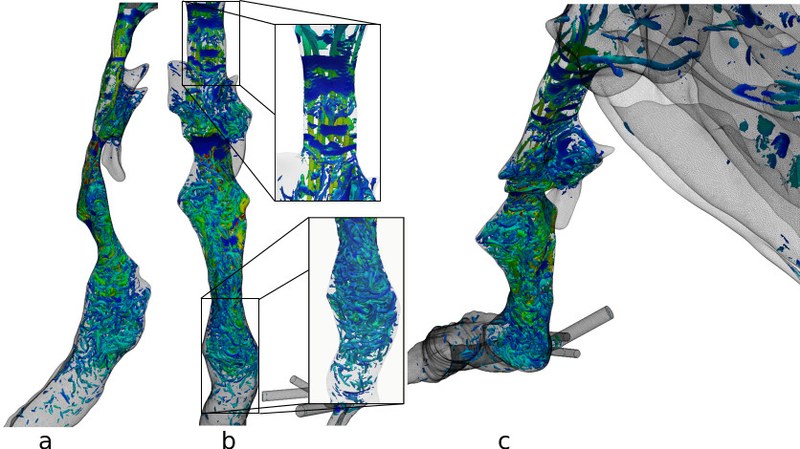Hadrien Calmet defends his thesis on fluid dynamics during a short and rapid inhalation (also called sniff) in the airways
Dec 11, 2020
Hadrien Calmet will defend his thesis directed by Dr. Guillaume Houzeaux and tutored by Dr. Daniel Calvete at the campus nord. Titled “Large-scale CFD and micro-particle simulations in a large human airways under sniff condition and drug delivery application,” the thesis presents results that set a precedent for large-scale airway simulations and provide a better understanding of the mechanisms. physiological
As we inhale, the air drawn through our nose undergoes successive accelerations and decelerations as it is turned, split, and recombined before splitting again at the end of the trachea as it enters the bronchi. Fully describing the dynamic behaviour of the airflow and how it transports inhaled particles poses a severe challenge to computational simulations. The dynamics of unsteady flow in the human large airways during a rapid and short inhalation (a so-called sniff) is a perfect example of perhaps the most complex and violent human inhalation inflow. Combining the flow solution with a Lagrangian computation reveals the effects of flow behaviour and airway geometry on the deposition of inhaled microparticles. See an explanatory video
Highly detailed large-scale computational fluid dynamics allow resolving all the spatial and temporal scales of the flow, thanks to the use of massive computational resources. A highly parallel finite element code running on supercomputers can solve the transient incompressible Navier-Stokes equations on unstructured meshes. Given that the finest mesh contained 350 million elements, the study sets a precedent for large-scale simulations of the respiratory system, proposing an analysis strategy for mean flow, fluctuations, wall shear stresses, energy spectral and particle deposition on a rapid and short inhalation.
Then in a second time, we will propose a drug delivery study of nasal sprayed particle from commercial product in a human nasal cavity under different inhalation conditions; sniffing, constant flow rate and breath-hold. Particles were introduced into the flow field with initial spray conditions, including spray cone angle, insertion angle, and initial velocity. Since nasal spray atomizer design determines the particle conditions, fifteen particle size distributions were used,each defined by a log-normal distribution with a different volume mean diameter.
This thesis indicates the potential of large-scale simulations to further understanding of airway physiological mechanics, which is essential to guide clinical diagnosis; better understanding of the flow and delivery of therapeutic aerosols, which could be applied to improve diagnosis and treatment.

Share: